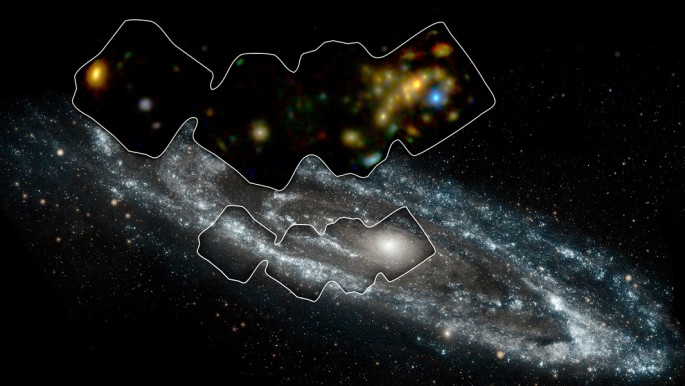NASA astronomers just zoomed in on Milky Way's big galactic neighbor and observed some 40 X-ray binaries that are believed to be a main ingredient in heating interstellar gases, driving the formation of new stars and evolution of galaxies.
Using NASA's Nuclear Spectroscopic Telescope Array (NuSTAR), this space telescope can detect some of the highest energies in the universe especially X-ray emissions where they chanced upon some from the majestic Andromeda galaxy.
The Andromeda is a massive spiral galaxy located some 2.5 million light years away, which is the Milky Way's nearest neighboring galaxy. This relatively close distance allowed the NuSTAR to detect and observe Andromeda's powerful X-ray emissions in great detail.
According to Daniel Wik from the NASA Goddard Space Flight Center, Andromeda is apparently the only large spiral galaxy where individual X-ray binaries can be detected and that can be studied further, to have an idea of more galactic activity in even more distant galaxies that are harder to observe.
What are X-ray binaries? They consist of two stellar objects of usually one star and a stellar remnant, that is usually a neutron star or even a black hole. When this duo orbit one another, plasma from the star can be sucked in by the stellar remnant, reeling it inside a neutron star or black hole. This plasma then goes through intense, and rapid heating which then generates X-rays.
NuSTAR observations can now see these X-ray binaries, providing more insight to astronomers in order to determine whether X-ray binaries contain more black holes or neutron stars. Astronomers can also compare the radiation that is emitted from regular X-rays from more distant galaxies. This new information can now lead to more understanding of how X-ray binaries can affect our own galactic environment.
According to principal investigator of the NuSTAR Andromeda studies, Ann Hornschemeier of Caltech, in the past few years, lower mass remnants from normal stellar evolution including black holes and neutron stars, may have played an important role in heating intergalactic gas during the early universe, that gave birth to the first stars and galaxies.



























